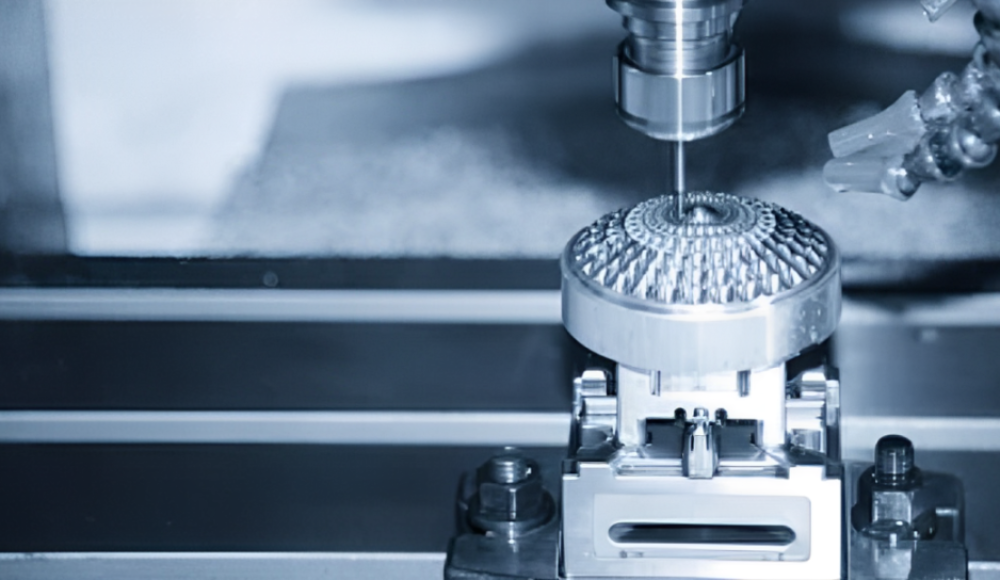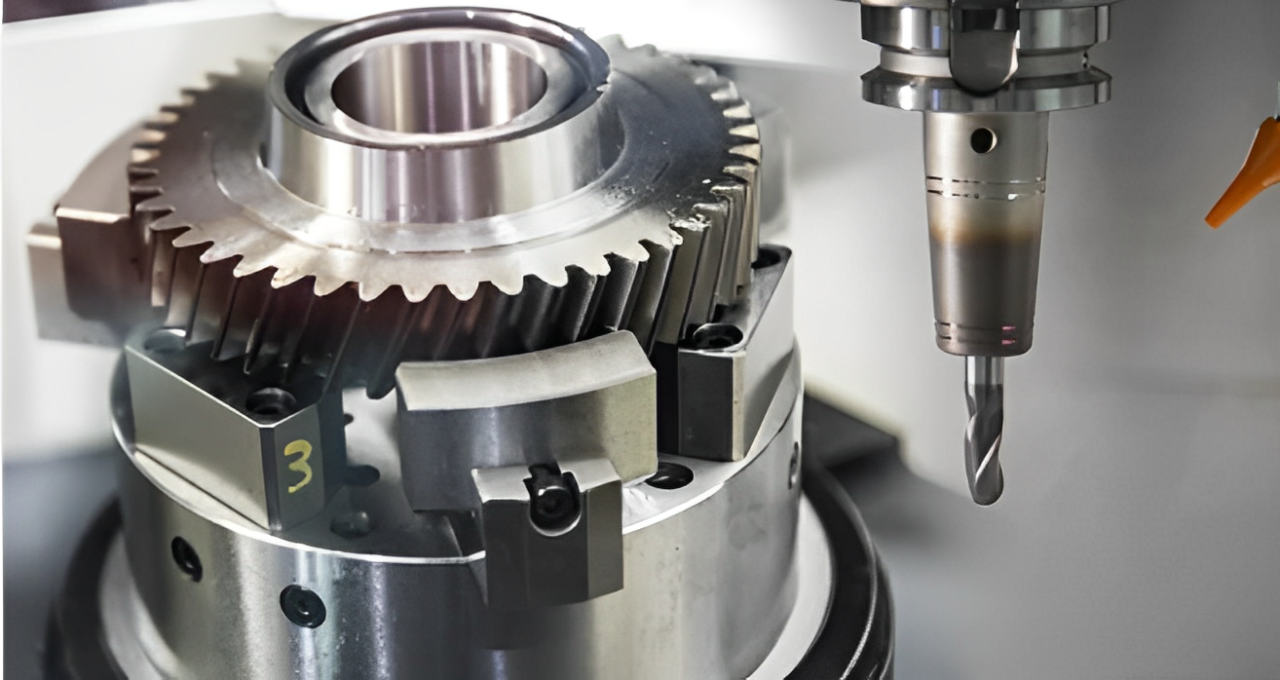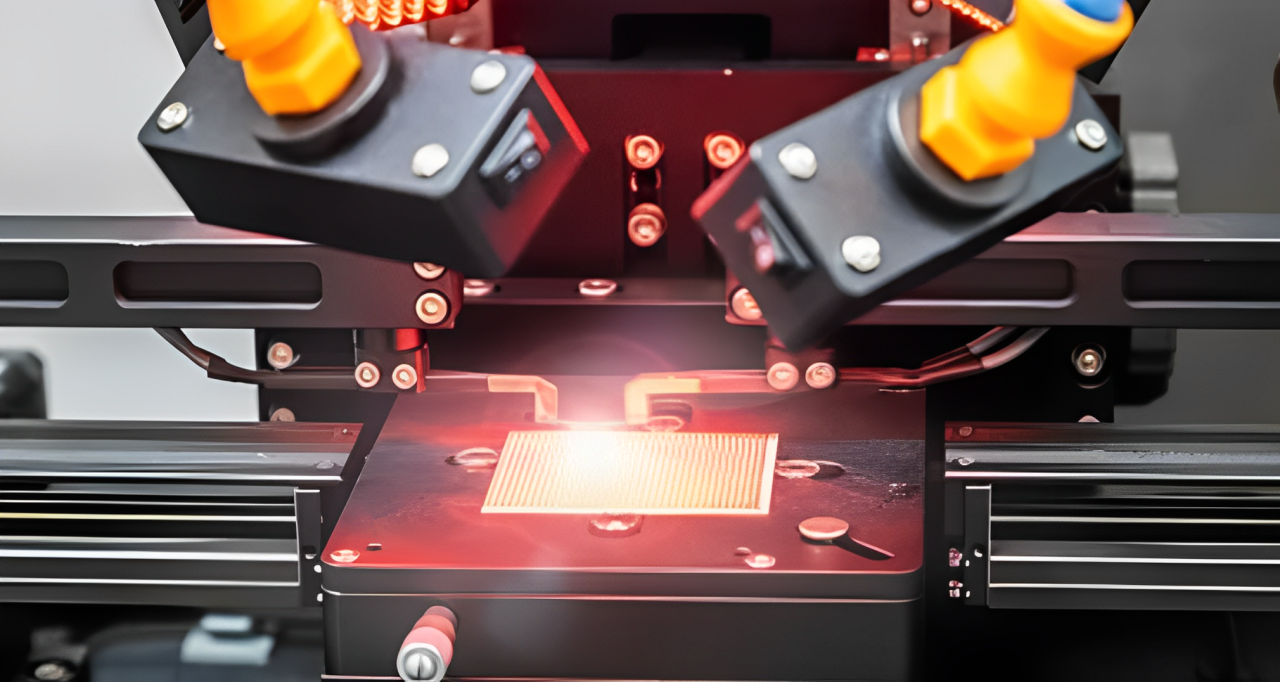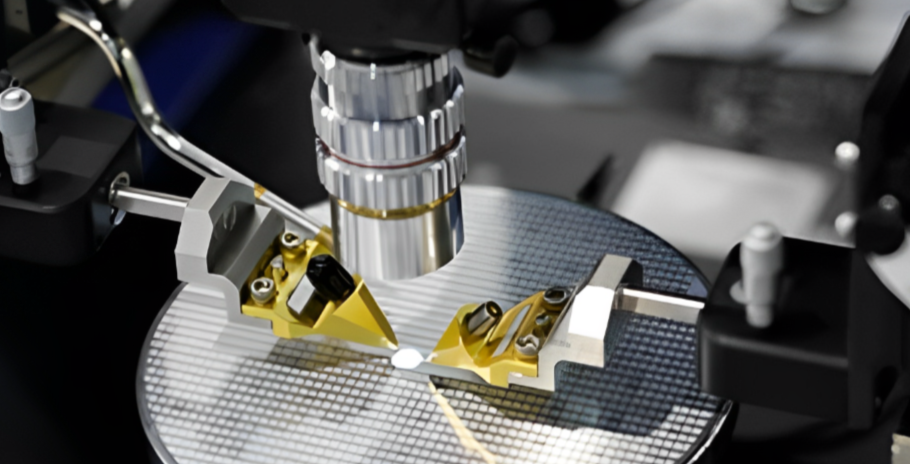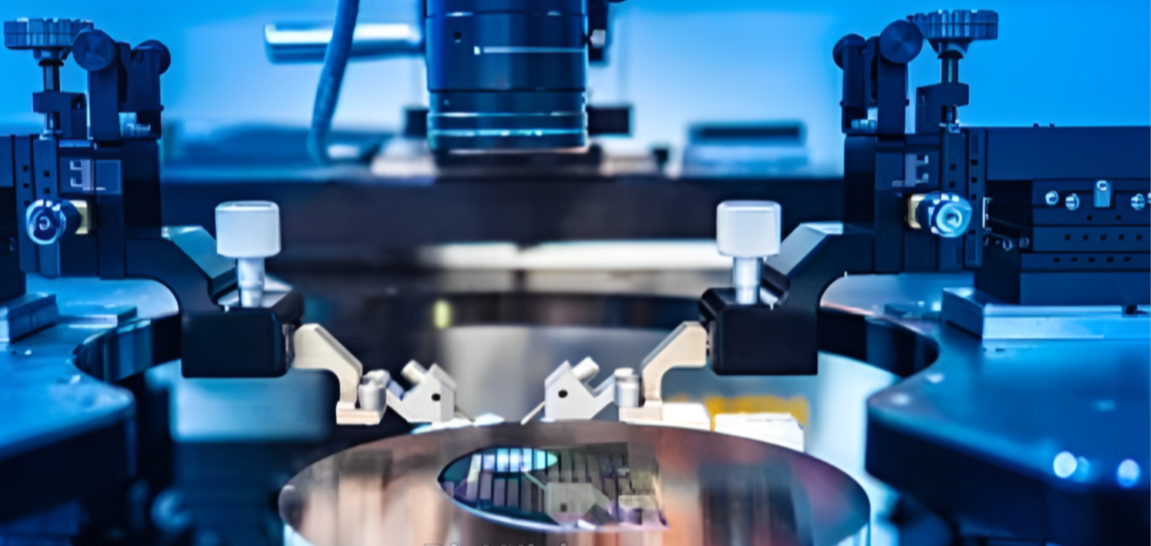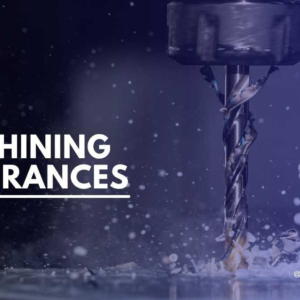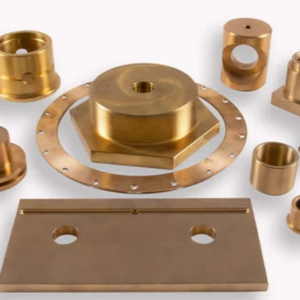Usinage miniature, également appelé micro-usinage, s'est avéré être une sous-discipline essentielle de l'ingénierie de fabrication, impliquant une fabrication précise des composants miniatures. Il propose une gamme d'applications dans de nombreuses industries impliquant l'électronique et les dispositifs médicaux. mis-à-part, Les techniques d'usinage miniature se sont considérablement développées. Cet article explore différents aspects de l'usinage miniature, y compris diverses techniques d'usinage, matériaux, et les applications de l'usinage miniature ainsi que ses problèmes et facteurs de préoccupation.
Qu'est-ce que l'usinage miniature?
Le miniature ou micro-usinage signifie fabriquer de petites pièces dont les dimensions sont mesurées en millimètres et mettre en œuvre des processus d'usinage sophistiqués.. Cet usinage nécessite une grande exactitude et précision. mis-à-part, c'est crucial pour les industries qui utilisent des sections complexes. Le micro-usinage utilise des outils et des machines qui fonctionnent à des échelles infimes, elle utilise la technologie de contrôle numérique par ordinateur dans la plupart de ses processus. Cependant, il se caractérise par sa précision, haut niveau de détail, et des produits de taille raisonnable.
Processus complet d'usinage miniature
La miniature ou micro-usinage se compose de plusieurs étapes, qui ont été développés spécifiquement pour créer de petites pièces précises. Voici un aperçu détaillé du processus complet d’usinage miniature:
1. Conception et prototypage
- Modélisation CAO: À partir de la création d'un modèle CAO de la pièce réelle, qui doit être fabriqué. Le modèle suivant est correctement développé avec des spécifications, tailles, et tolérances incluses de manière appropriée.
- Prototypage: Un prototype physique peut être créé par la technique du prototypage rapide, c'est à dire. 3Impression D. Cela aide à vérifier la conception avant de commencer réellement le processus d'usinage..
2. Sélection des matériaux
- Choisir le bon matériau: Auto-prouvé, en fonction de l'application de la pièce miniature, matériaux adaptés, c'est à dire. aluminium, acier inoxydable, plastiques, etc..
- Materielle préparation: La matière première est achetée pour être utilisée et qualifiée pour répondre aux normes requises et aux processus d'usinage attendus.
3. Configuration de l'outillage
- Sélection d'outils: Choisir les bons outils – les fraiseuses ou perceuses micro CNC dépendent du matériau et la conception de la pièce est également essentielle..
- Configuration de la machine: Les outils adaptés à l'usinage miniature sont installés sur une machine CNC pour définir la bonne vitesse, vitesse d'avance, et profondeur de coupe.
4. Processus d'usinage
- Collaboration: Le matériau est parfaitement fixé par un luminaire ou un étau sur la table pour minimiser ou éliminer tout mouvement pendant le processus d'usinage.
- Usinage CNC: Les opérations de la CNC de micro-mortel sont motivées par un programme de conception pour créer le produit souhaité. Ce processus peut impliquer diverses techniques, y compris:
- Fraisage: La coupe du moulin micro CNC comprend la sculpture pour ajouter ou obtenir certaines caractéristiques dans les caractéristiques ou les formes.
- Tournant: Brouille du matériau pour tourner le cylindre vers l'angle requis pour couper les pièces circulaires.
- Forage: Forage comme indiqué dans la conception.
- Usinage par décharge électrique (GED): La forme du matériau à couper est complexe ou lors de la coupe à travers des matériaux difficiles.
- Surveillance: Pendant l'usinage, Les opérateurs sont toujours proches, observant soigneusement pour obtenir les bons résultats.
5. Opérations post-massage
- Débarquant: Il comprend le processus de lissage de la finition de surface du produit. Donc, il peut être sûr et esthétiquement agréable.
- Finition: Traitements de surface artificiels comme le polissage, anodisation, ou le revêtement pour faire en sorte que la surface soit belle et fonctionne encore mieux.
6. Contrôle de qualité
- Inspection: Les techniques d'usinage comprennent des instruments de mesure de précision tels que les étriers, et micromètres. Donc, Ils peuvent s'assurer que les pièces répondent aux tolérances et tailles requises.
- Essai: Effectuer des tests fonctionnels ou de contrainte pour déterminer si la pièce fonctionne bien.
7. Assemblée (si nécessaire)
- Intégration des composants: Dans les affaires d'entreprise, Les composants miniatures peuvent être assemblés avec d'autres pour former une dernière partie d'un assemblage particulier.
- Adaptation miniature: L'adapter d'une manière qu'il doit devenir bien adapté et fonctionnel dans la chaîne de montage.
Importance des tolérances étroites dans l'usinage miniature / micro CNC
Voici quelques aspects importants pour comprendre comment la tolérance serrée est importante dans l'usinage CNC miniature.
- Fonctionnalité: Les tolérances sont importantes car dans la plupart des conceptions, les petites pièces qui composent un assemblage doivent s'adapter aux composants d'accouplement pour être efficaces.
- Contrôle de qualité: Maintient la cohérence entre les parties partielle et la course entre la partie, ce qui est particulièrement important dans les industries qui nécessitent une grande précision, c'est à dire. Aérospatial et médical.
- Interchangeabilité: Les portions doivent être interchangeables; Suivre un plan de tolérance signifie que des pièces de différentes courses de production s'adapteront bien aux autres.
- Réduction des déchets: Haute précision aide à minimiser les matériaux de ferraille. mis-à-part, Il réduit efficacement le coût et augmente la production.
- Amélioration des performances: Un degré élevé de précision dans la détermination de la forme précise des composants conduit à de meilleures performances, y compris la résistance à l'usure et l'augmentation de la durée de vie des composants.
Matériaux compatibles avec l'usinage miniature / micro CNC
| Matériel | Densité (g/cm³) | Dureté (Rockwell) | Applications typiques |
| Alliages d'aluminium | 2.7 | B70-80 | Composants aérospatiaux, logements électroniques |
| Acier inoxydable | 7.9 | B80-90 | Dispositifs médicaux, attaches, petit engrenage |
| Alliages de titane | 4.5 | B30-35 | Pièces aérospatiales, implants, composants hautes performances |
| Plastiques (par exemple., Delrin, PTFE) | 1.4-2.0 | R80-90 | Engrenages, roulements, logements, isolation |
| Cuivre | 8.9 | B60-65 | Connecteurs électriques, échangeurs de chaleur |
| Laiton | 8.5 | B60-70 | Vannes, raccords, pièces décoratives |
| Acier au carbone | 7.8 | C25-40 | Outils, composants automobiles |
| Nylon rempli de verre | 1.4-1.5 | R80-90 | Composants structurels, pièces de l'usure |
| Céramique | 3.0-3.5 | H60-70 | Outils de coupe, isolateurs |
| Alliages de magnésium | 1.8 | B60-70 | Pièces aérospatiales, composants automobiles |
Différentes techniques utilisées dans l'usinage miniature
Donc, Discutons des différentes techniques utilisées dans la micro-mutation:
1. Fraisage CNC
Fraisage CNC utilise des outils de coupe pour mouler ou peler et donne des contours géométriques complexes de pièces. La conception de la coupe est très précise et peut être utilisée pour de nombreuses applications, c'est à dire. broyage du visage et du contour. Le problème avec des tolérances étroites en particulier sur les petites pièces usinées est l'essence hautement procédurale de la configuration des machines et de la programmation.
2. Tournage CNC
Tournage CNC Crée des formes de tournant des pièces cylindriques à travers la rotation de la pièce dans le tour. Ici, les outils ne tournent pas pour éliminer le matériau et bien fonctionner lors de la création de formes de symétrie fournissant des plaines extrêmement précises et polies. Cependant, sa demande est limitée au formulaire géométrique.
3. Usinage par décharge électrique
GED Élimine le matériau à travers des étincelles électriques ainsi adaptées aux travaux sur des formes difficiles dans les matériaux durs, c'est à dire. acier et titane. Cette méthode est particulièrement bonne pour concevoir des moules et des matrices. Cependant, C'est un processus long qui peut prendre beaucoup plus de temps à configurer par rapport à d'autres techniques.
4. Coupe au laser et gravure
La technique de coupe laser concentre les poutres laser pour couper ou graver les matériaux dans des conceptions très étroites. Il est préférable pour les assiettes minces mais pas bonnes pour les épaisses ou où beaucoup de matériaux doivent être découpés.
5. Micro-machine
La micro-machine est un processus de raccourci, fracturé, ou dimensions des composants réduits à une échelle sous 1 mm. Ces œuvres impliquent de petits outils pour fabriquer une petite fonctionnalité, ce qui est très utile dans la fabrication d'instruments médicaux. Cependant, Il est limité par le fait que des outils et équipements plus avancés sont nécessaires en raison des longues heures d'usinage.
6. Couper à jet d'eau
La coupe à jet d'eau utilise de l'eau à haute pression avec des particules de grenat pour couper les pièces avec peu de chaleur. Il convient aux formes complexes mais pas aussi précises que la coupe laser, et généralement, Le matériel a besoin d'un traitement supplémentaire.
7. 3D Impression
En impression 3D, De nouvelles pièces sont ajoutées à la fabrication et permettent un prototypage rapide des géométries complexes. Il existe une variété de matériaux qu'il soutient, mais peut parfois nécessiter un post-traitement pour atteindre la précision particulière.
8. EDM à couler
EDM à couler applique des électrodes en forme pour la dépression et les contours intérieurs sur les matériaux durs. Il offre une grande précision pour la fabrication de moisissures mais peut prendre du temps, et doit être préparé méticuleusement.
Facteurs clés à considérer essentiels pour l’usinage miniature
Discutons de quelques facteurs clés à considérer pour l'usinage miniature:
- Vitesse: Il est donc essentiel d'équilibrer les vitesses de la broche pour obtenir une précision élevée et éviter la déformation thermique de la pièce.
- Taux d'alimentation: Les taux d'alimentation corrects permettent à l'usage du matériau de la bonne manière avec moins ou pas d'effets sur la pièce.
- Sélection d'outils: Il est important de sélectionner le bon outil, c'est à dire. MICRO CNC MILLS OU FEETS. Ils affectent grandement le fonctionnement de l'usinage de micro-précision.
- Utilisation du liquide de refroidissement: Le liquide de refroidissement correct aide à contrôler la chaleur et améliore la durabilité de l'outil lors de l'usinage.
- Étalonnage de la machine: Ce processus nécessite un étalonnage CNC plus fréquent pour obtenir l'usinage des pièces appropriées de différentes tailles miniatures.
Pour les avantages et les inconvénients de l'usinage miniature / micro précision
Voici les avantages et les inconvénients de l'usinage miniature:
Avantages:
- Haute précision: La fabrication de moisissures est réalisable avec des conceptions délicates ayant de petits dégagements et une grande précision.
- Évolutivité: Il est facile d'équilibrer la production de la petite échelle à la grande échelle.
- Polyvalence: Peut être utilisé sur à peu près n'importe quel matériel et dans presque toutes les situations.
- Réduction des déchets: La réduction du montant des déchets implique de meilleurs coûts et une empreinte environnementale matérielle.
- Capacités d'automatisation: Cette technologie peut être couplée à un ordinateur pour automatiser la fabrication, Appuyant sur plus de lignes de production.
Limites:
- Coûts initiaux plus élevés: Équipement et outils sophistiqués, en général, avoir un coût élevé.
- Configuration complexe: Il a besoin d'un cadre spécial et peut prendre un certain temps pour se mettre en place.
- Limitations de matériaux: Certains matériaux peuvent être difficiles pour la machine lors de l'adoption du principe de miniaturisation.
- Exigences de compétences: Les personnes compétentes exploitent et supervisent les opérations de fabrication de miniaturisation avec compétence.
Applications de l'usinage miniature
Ayons un aperçu des applications communes de l'usinage miniature:
- Équipement médical: La production de petites pièces pour l'équipement chirurgical, implants orthopédiques, et matériel de diagnostic.
- Aérospatial: Employé dans la fabrication de poids légers, Applications à haute résistance pour les avions et les vaisseaux spatiaux.
- Électronique: Fabrication de connecteurs électromagnétiques miniaturisés, circuits imprimés, et des pièces pour les produits de communication mobile.
- Automobile: La production de composants précis utilisés dans la fabrication de moteurs et de composants électroniques dans les véhicules.
- Robotique: Miniature & Pièces micromécaniques utilisées dans les robots & Systèmes automatisés.
Conclusion
En conclusion, L'usinage miniature ou la micro-machine est un sous-secteur significatif du secteur manufacturier car il permet la création de produits petits mais très complexes. Ces produits peuvent être nécessaires dans plusieurs industries de haute technologie et ont ouvert de nouveaux potentiels pour augmenter l'ampleur des avantages dérivés de l'usinage miniature. C'est parce que les industries continuent de se développer. Donc, Il restera un domaine vital pour de nombreux fabricants qui souhaitent gagner une maîtrise dans la fabrication de précision.
Questions fréquemment posées
T1. Quels types de pièces l'usinage miniature produit généralement?
La micromachinage est généralement effectuée sur des parties de tailles dans la gamme de millimètres et dans la plupart des cas moins de 5 mm.
T2. Quelles industries font le minuscule l'usinage le plus efficacement?
Industries de précision, y compris les dispositifs médicaux, aérospatial, électronique, automobile, et la robotique utilise l'usinage miniature de leurs pièces.
T3. Ce qui définit le micro CNC différent du CNC ou l'usinage conventionnel normal?
Micro CNC Le tournant se concentre sur la fabrication plus petite, diluant, et des composants plus compliqués avec une précision et une précision d'usinage plus élevées qui ont besoin d'outils et de méthodes spécifiques.
T4. Quels matériaux sont utilisés dans la mini-machine?
Les matériaux couramment utilisés sont en aluminium et ses alliages, acier inoxydable, titane, alliages, plastiques, et du cuivre.
Q5. Quelles sont les difficultés de la miniature?
Les préoccupations sont; précision, condition d'outil, installation, et les matériaux et les outils.
Q6. Si l'usinage miniature peut être automatisé?
Oui, Il est courant d'avoir l'usinage miniature à contrôler par la technologie CNC, ce qui contribue à améliorer l'efficacité ainsi que la précision.
Q7. Où les tolérances s'inscrivent dans le contexte de l'usinage miniature?
La minimisation des variations est essentielle dans l'usinage miniature car les pièces doivent fonctionner comme conçues et s'adapter aux autres pièces des assemblages.

